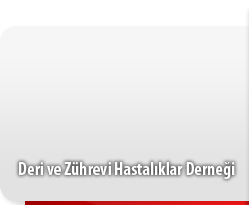Efficacy and safety of long-pulsed alexandrite laser for the treatment of solar lentiginesŞükran Sarıgül Güdük1, Sadiye Kuş21Haliç University Faculty of Medicine, Department of Dermatology, İstanbul, Türkiye
2Private Practice, İstanbul, Türkiye
Background and Design: Various lasers, mainly nanosecond Q-switched (QS), and picosecond lasers, have been successfully used to treat solar lentigines. However, picosecond lasers are expensive, and QS lasers have a higher risk of post-inflammatory hyperpigmentation (PIH) in darker skin types. The aim of our study is to examine retrospectively the efficacy and safety of long-pulsed alexandrite laser in the treatment of solar lentigines, compare our findings to previous studies with nano and pico-second lasers, and evaluate long-term outcomes regarding recurrence.
Materials and Methods: We retrospectively analyzed 39 patients with a clinical diagnosis of solar lentigo treated by long pulsed alexandrite laser. Patients photographs and clinical charts were reviewed in terms of demographic features, areas of treatment, number of sessions, laser settings, recurrence of lesions, Fitzpatricks skin type, and any side effects observed.
Results: The rate of improvement was excellent in 33 (84.6%), moderate in 4 (10.2%), and mild in 2 (5.1%) patients. Seven (18%) patients with Fitzpatrick's skin type III and IV developed PIH. Lesion recurrence was observed in 5 patients (12.8%). Mean time to recurrence was 57.98±4.45 months.
Conclusion: Our study suggests that long pulsed alexandrite laser is an effective and safe option in the treatment of solar lentigines. Keywords: Solar lentigo, solar lentigo treatment, solar lentigines, alexandrite laser
Solar lentigo tedavisinde uzun atımlı alexandrite lazerin etkinlik ve güvenilirliğiŞükran Sarıgül Güdük1, Sadiye Kuş21Haliç Üniversitesi Tıp Fakültesi, Dermatoloji Anabilim Dalı, İstanbul, Türkiye
2Özel Muayenehane, İstanbul, Türkiye
Amaç: Solar lentigo tedavisinde nanosaniye Q-anahtarlı QA ve pikosaniye (PS) lazerler başta olmak üzere pek çok lazerin başarılı olduğu bildirilmiştir. Ancak PS lazerler çok pahalı sistemlerdir. QA lazerler ise koyu tenli hastalarda yüksek post-enflamatuvar hiperpigmentasyon (PİH) riskine sahiptir. Çalışmamızın amacı, solar lentigo tedavisinde uzun atımlı alexandrite lazerin etkinlik ve güvenilirliğini incelemek, sonuçlarımızı nano- ve piko-saniye lazer kullanılan mevcut çalışmalarla karşılaştırmak ve rekürrens açısından uzun dönemli sonuçlarını bildirmektir.
Gereç ve Yöntem: Klinik olarak solar lentigo tanısı nedeniyle uzun atımlı alexandrite lazer uygulanmış 39 hasta retrospektif olarak analiz edildi. Hasta dosyaları ve fotoğrafları; demografik özellikler, tedavi bölgeleri, seans sayısı, lazer parametreleri, lezyonların rekürrensi, Fitzpatrick deri tipi ve yan etkiler açısından gözden geçirildi.
Bulgular: İyileşme derecesi 33 (%84,6) hastada mükemmel, 4 (%10,2) hastada orta ve 2 (%5,1) hastada hafif olarak değerlendirildi. PİH, Fitzpatrick deri tipi III ve IV olan 7 (%18) hastada gelişti. Beş (%12,8) hastada lentigo lezyonları nüksetti. Nükse kadar geçen süre ortalama 57,98±4,45 ay olarak hesaplandı.
Sonuç: Çalışmamız, uzun atımlı alexandrite lazerin solar lentigo tedavisinde etkili ve güvenilir bir tedavi seçeneği olduğunu göstermektedir. Anahtar Kelimeler: Solar lentigo, solar lentigo tedavisi, solar lentijinler, alexandrite lazer
Şükran Sarıgül Güdük, Sadiye Kuş. Efficacy and safety of long-pulsed alexandrite laser for the treatment of solar lentigines. Turkderm-Turk Arch Dermatol Venereol. 2023; 57(3): 108-112
Corresponding Author: Şükran Sarıgül Güdük, Türkiye |
|



